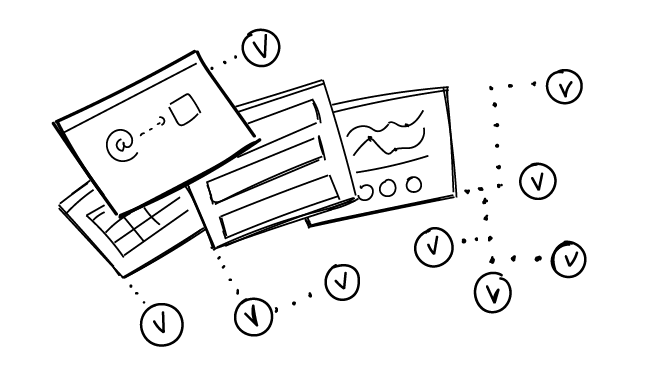Nothing bruises a marketer’s ego faster than realizing your big, beautiful campaign is gathering dust in a spam folder. You did the research, wrote a killer subject line, maybe even agonized over the perfect emoji. And yet, all that work is invisible to the people you wanted to impress. Why? Spam filters don’t care about your good intentions—they care about red flags.
Below are nine common (and fixable!) mistakes that doom campaigns to the digital junkyard, with plenty of detail so you can avoid these classic traps.
Similarities and differences: avoiding spam vs. nurturing engagement
Understanding how to avoid the spam folder often overlaps with strategies for building genuine subscriber engagement—but they’re not identical goals. Let’s break down five key points of comparison:
- Permission and consent:
Similarity: Both require you to get clear, explicit opt-in from subscribers to build trust and stay compliant.
Difference: Spam avoidance is primarily about legal and technical consent (think: double opt-in), while engagement goes a step further—making sure people actually want to hear from you and are excited to open your emails. - Content quality:
Similarity: High-quality, relevant content is crucial for inbox placement and for nurturing ongoing relationships.
Difference: For spam filters, content quality is about avoiding red flags (spammy words, too many links); for engagement, it’s about storytelling, value, and entertainment. - Frequency and timing:
Similarity: Both are sensitive to how often you send emails and when.
Difference: Spam filters penalize sudden surges or erratic sending; engagement requires you to find a rhythm that keeps your brand top-of-mind without causing fatigue. - List management:
Similarity: Clean, up-to-date lists reduce both spam risk and subscriber churn.
Difference: From a spam perspective, it’s about technical hygiene (removing bounces, traps); from an engagement view, it’s about segmenting for personalization and relevance. - Interactivity:
Similarity: Encouraging replies and clicks can improve inbox placement and boost loyalty.
Difference: For deliverability, it’s about demonstrating to providers that you’re not a robot; for engagement, it’s about building a community and sparking real conversations.
1. Using a dodgy sender address
Spam filters are obsessed with sender reputation. If you’re blasting emails from a free account (like Gmail or Yahoo), or if your “From” address doesn’t match your domain, expect trouble. Filters also hate addresses like “no-reply@” or ones stuffed with random numbers and letters.
Using a legitimate, consistent sender address connected to your own domain builds trust on both sides: for filters and for your recipients. Stick to branded, recognizable emails (“[email protected]”), and avoid changing sender names or addresses too often—consistency matters for inbox placement. Set up SPF, DKIM, and DMARC records to prove you’re really you (your IT team can help), or risk being lumped in with phishers and spammers.
2. Neglecting list hygiene
Nothing signals “spammer” like sending to a bunch of invalid, outdated, or bought email addresses. High bounce rates, dead inboxes, and frequent spam traps all lower your sender reputation, which directly impacts deliverability.
Regularly scrub your lists using an email verification service, and always remove hard bounces, unsubscribes, and complaints ASAP. Don’t be tempted to buy or rent lists—it’s a shortcut to the spam folder and could get you blacklisted entirely. Healthy, engaged lists mean higher open rates, better results, and fewer headaches down the line. You can also use insights from an exit survey (when subscribers choose to leave) to improve your targeting and content strategy.
3. Forgetting permission and consent
Sending campaigns to people who never opted in? That’s a surefire way to get marked as spam, tanking your sender score. Filters pay attention to recipient behavior—if too many mark you as unwanted, you’re toast.
Always use confirmed (double) opt-ins for your lists, and make it crystal clear what subscribers can expect when signing up. Give recipients an easy way to update preferences or unsubscribe in every email—no tricks, no hidden buttons. A transparent process builds trust and keeps your brand’s reputation safe.
4. Going overboard with images and links
Spam filters analyze email content for signals of manipulation or fraud. Emails stuffed with massive images, too many links, or zero plain text content are prime targets for the junk folder. Big images can trigger size limits, and a wall of links often looks like phishing.
Aim for a balanced ratio of text to images (with alt text on every image), and keep links relevant—don’t litter your email with dozens of calls to action. Test emails with images blocked to ensure your message still makes sense and isn’t just a blank box. When in doubt, less is more: simple layouts and clear copy nearly always win with both filters and humans.
5. Writing spammy subject lines and content
Nothing screams “spam” like subject lines with ALL CAPS, multiple exclamation marks, misleading promises (“Get Rich Quick!!!”), or phrases like “FREE OFFER.” Spam filters are tuned to catch these clichés, and users are too.
Stick to honest, natural-sounding subject lines and preview text—avoid language you wouldn’t use in a face-to-face conversation. Be wary of using too many salesy words or overloading your copy with pushy urgency. A/B test your subject lines to see what works without triggering alarms, and check them with spam-testing tools before hitting send.
6. Skipping authentication and technical setup
You can write the world’s best email, but if your technical house isn’t in order, it won’t reach the inbox. Missing authentication records, misconfigured sending domains, or blacklisted IPs will get you filtered before content even matters.
Work with your IT or email provider to set up proper SPF, DKIM, and DMARC records—these prove your messages are authentic. Monitor sender reputation using dedicated tools and regularly check for blacklists. If you use third-party tools or marketing platforms, make sure your sending domains are verified and compliant.
7. Sending too many emails, too fast
Email blasting may seem efficient, but large, sudden spikes in volume are red flags for spam filters. If you suddenly send to your entire list after months of silence, expect deliverability issues—or outright blocking.
Warm up new IPs or domains gradually, starting with small batches and scaling up as engagement grows. Stay consistent with your sending schedule, and segment lists to avoid overwhelming any one group. Monitor engagement metrics—if opens or clicks plummet, slow down and rethink your approach before continuing.
8. Hiding your unsubscribe link
Spam filters—and anti-spam laws—insist on a clear, working unsubscribe link in every campaign. If you hide it, make it tiny, or (worst of all) require recipients to log in to leave, you’ll rack up spam complaints fast.
Make your unsubscribe process painless: one click, no tricks, no guilt trip. Use friendly language (“Sorry to see you go!”), and consider letting people adjust frequency rather than just quitting cold turkey. A visible unsubscribe link actually increases trust and reduces spam reports, helping you stay in good graces with both filters and subscribers.
9. Ignoring engagement signals
Email providers use recipient engagement—opens, replies, forwards, even delete rates—to judge whether you’re wanted or spammy. If you consistently get low opens, high deletions, or zero replies, your future campaigns will get filtered out more often.
Segment your lists to target active subscribers and re-engage (or remove) those who haven’t interacted in months. Encourage replies with conversational copy or questions, and celebrate when users engage positively. Pay attention to engagement trends—if you notice a dip, act quickly to tweak content, timing, or offers before things get worse. You could mention how using the best virtual office software can help teams collaborate better on email marketing strategies to boost engagement.
Common mistakes (and how to dodge them)
Even the most seasoned marketers fall for common traps—sometimes out of habit, sometimes due to old advice that no longer holds up. Here are five frequent errors that send campaigns straight to spam, plus smart ways to sidestep them:
- Treating every subscriber the same.
Sending identical messages to your entire list leads to low engagement and more spam complaints. Segment your lists and tailor content to each group’s interests and needs for better results. - Over-automating without review.
Automation tools can help, but relying blindly on templates or scheduled blasts often results in stale, repetitive, or irrelevant content. Always review, refresh, and personalize before hitting send. - Ignoring mobile optimization.
A clunky email on mobile devices annoys users and may even trigger spam complaints. Use responsive design and preview your emails on multiple devices before launching your campaign. - Failing to test before sending.
Skipping test sends means you might miss broken links, rendering issues, or spammy elements. Send test emails to various inboxes and use spam-checking tools to catch problems in advance. - Neglecting the “reply-to” experience.
Using “no-reply” addresses or failing to monitor replies is a red flag to filters and recipients alike. Use a monitored, human reply address and be ready to engage—real conversations reduce the risk of being marked as spam.
Future implications
Looking ahead, spam filters will only become more sophisticated, with AI and behavioral analytics raising the bar for deliverability. Algorithms will likely judge not just sender reputation and content, but also real-time recipient engagement—making it harder for lazy or one-size-fits-all campaigns to slip through. Privacy laws and email authentication standards will tighten, demanding greater transparency and stricter consent management. Marketers will need to invest more in data quality, list hygiene, and hyper-personalization to maintain inbox access. Expect a shift toward two-way, interactive email experiences and channels where engagement is ongoing, not just a blast-and-pray approach. The future belongs to brands that build trust and value, not just visibility.

